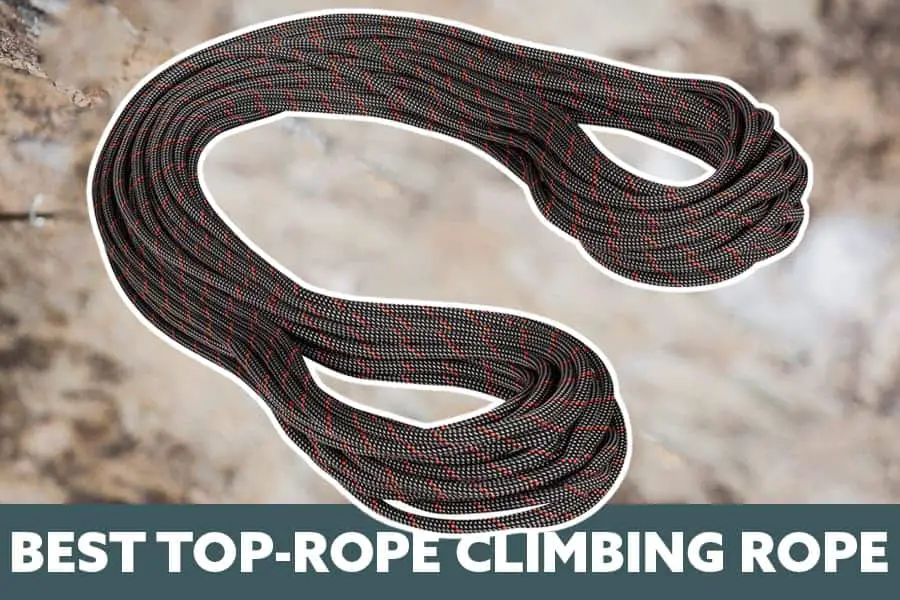Top-Rope climbing is a great way to get into climbing and if you want to start climbing outdoors, then you’re probably looking for a good rope to get you started.
Top rope climbing doesn’t require as many features as sport climbing so I was able to narrow down available options and find a rope that has the best value for the price.
What I found is that the Mammut Crag Classic Rope 9.8mm (Link to Product on Backcountry) rope has a balance between being a semi-dynamic/dynamic rope, available in 60-80 Meters, fits the diameter requirements for common belay devices and is at a great price point.
What To Look For In A Top Rope Climbing Rope
The general rule is that as long as you buy the rope brand new and from a reputable retailer, the rope will likely be safe to use.
Apart from that, you may find yourself overwhelmed with what qualities to look for in a climbing rope for your top-rope climbing adventures.
When I went through this process, I learned that the Mammut Crag Classic Rope is perfect but there are some quality alternatives as well (listed at the bottom).
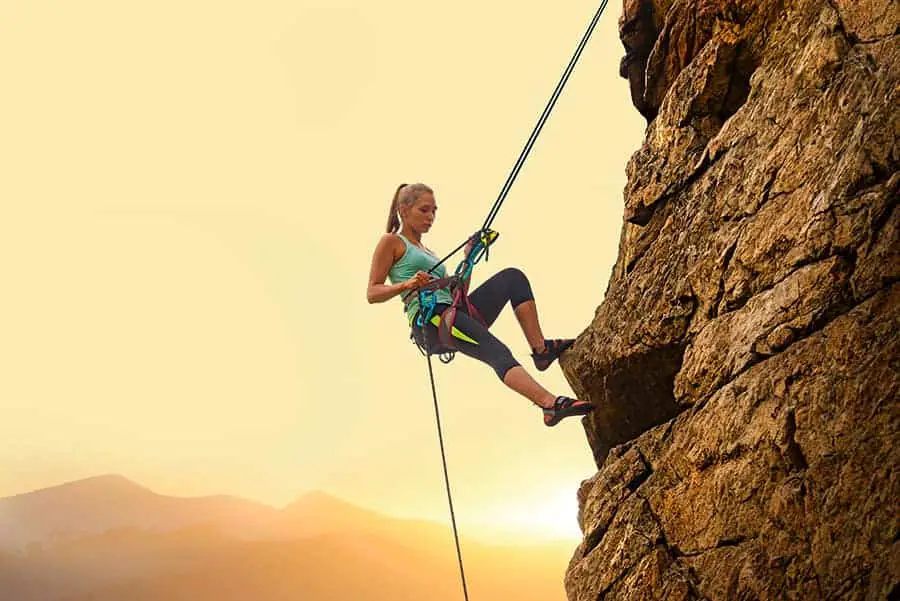
Type: Dynamic vs Static vs Semi-Dynamic
Rope ranges from dynamic to static, which means that they are either flexible and stretchy or stiff. The more flexible the rope is, the more give it has if you fall. This is useful if you fall so the impact on you and your harness is cushioned a little. The cushion is important so you don’t hurt yourself, get bruised or get sore from the harness yanking against your legs and waist when you fall.
Because of this “cushion,” it is particularly important for sport climbing since falls can be up-to 5 meters long.
With top-rope climbing, however, the length of a fall is based on how much slack you climb with. Some climbers keep the rope super tight when they are top-roping so if they fall, they don’t move more than a few inches.
For climbers that keep minimal slack and a super tight line, they can get away with a static rope.
For climbers that like a little bit of slack, even just a foot or so of slack, it is ideal to have some sort of dynamic movement in the rope, such as a semi-dynamic rope. That way when you fall a foot or more, you won’t get injured or sore.
To fit the needs of both type of climbers, a semi-dynamic or dynamic rope works best.
Mammut Crag Classic Rope: Semi-Dynamic to Dynamic
The Mammut Crag Classic Rope has a 32.70% Dynamic Elongation, which is highly dynamic so it doesn’t matter how much slack you use while climbing, any falls will be well cushioned.
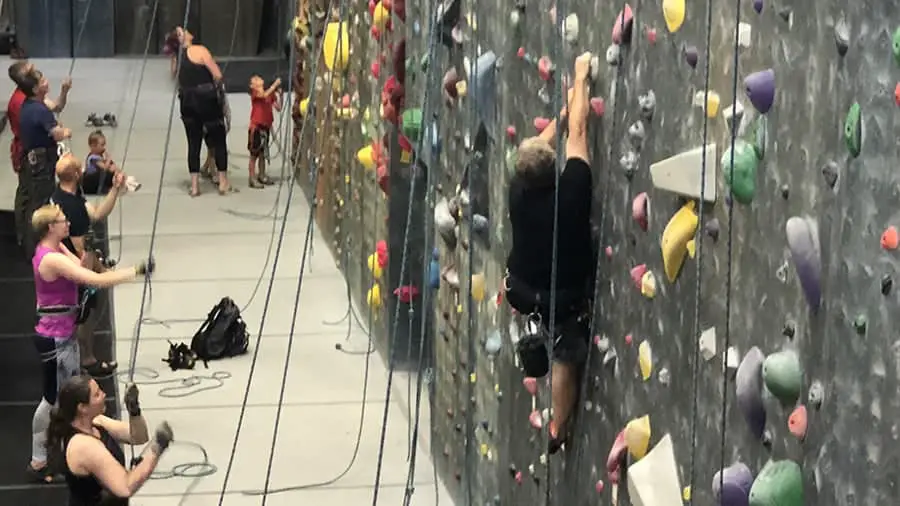
Length
The length of the rope directly affects what routes you can climb because if your rope isn’t long enough, then you can’t climb it. For this part of your decision process, I recommend looking at the routes you would like to climb and ensure that your rope is at least double that length.
For most Top-Rope routes they will likely be between 15 and 30 meters so you would need a rope that is at least 30-60 meters long.
You should always know how long a route is before you climb it. However, if you are trying to plan ahead for trips unplanned and you aren’t quite sure how long the routes will be, consider getting a longer rope just in case.
Mammut Crag Classic Rope: 60-80 Meters
The Crag Classic rope can be purchased at 60, 70 and 80 meters long. In most top-rope adventures, 60 meters should be plenty long enough.
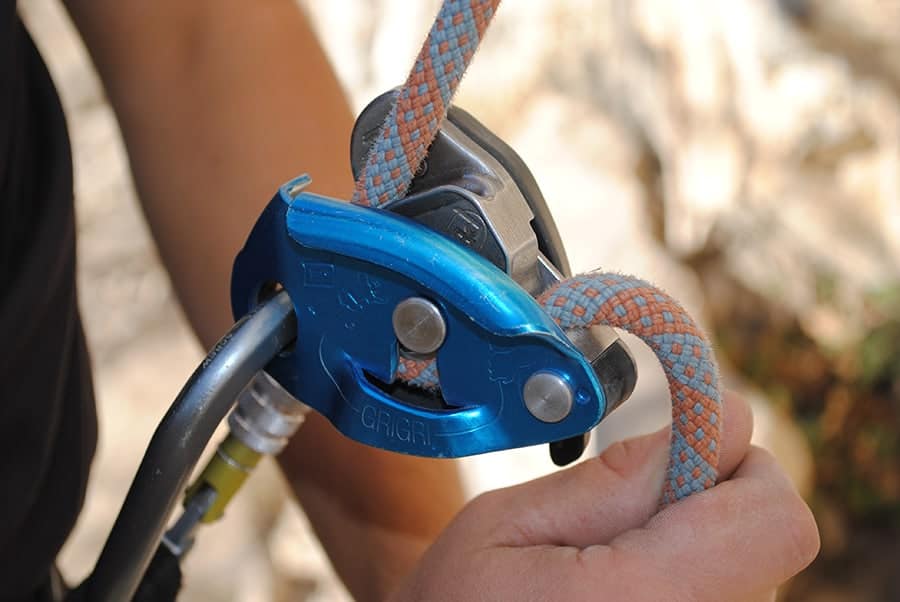
Diameter/Width
The diameter of your rope is how thick your rope is. The width of your rope dictates two main aspects of your climbing experience:
- How easy your rope moves through the belay device.
- How heavy the rope is.
Many climbers prefer to rope in the 9-9.8mm realm because it is lighter so it takes less effort to get the rope up to the crag.
Though a thinner rope is lighter and therefore easier to get to the crag, it is also smaller and will require more effort or a better control to keep the climber safe when running it through the belay device.
If the rope is too big, it won’t fit in the belay device. If the rope is too small, then the belay device won’t be able to stop the rope from going through the device.
Here is a table for the rope sizes required for popular belay devices.
| Grigri | 8.9 to 11 mm |
| Madrock Lifeguard | 8.9 to 11 mm |
| Black Diamond Pilot | 8.7-10.5 mm |
| Mammut Smart Belay Device | 8.7-10.5 mm |
| Most other ATC Belay devices | 7.7-11 mm |
Mammut Crag Classic Rope: 9.8mm
This rope is 9.8mm in diameter, which fits all of the belay devices above. It is thicker so it will be heavier, but the thicker diameter delivers longer-lasting durability and better handling than a skinnier rope.
Dry Vs Non-Dry Rope
The difference between a dry rope and a non-dry rope is that the dry rope can be used in wet environment such as a waterfall or in the rain. If you are trying to save money and you don’t ever plan to be in a wet environment then you can probably get away with a non-dry rope.
However, many climbers claim that dry rope can handle the environment better than non-dry rope because of how they get treated.
For me, I don’t plan on climbing while it’s raining or over waterfalls so I don’t need to spend the extra money ($50-$100 more on average) on a dry rope.
Mammut Crag Classic Rope: Non-Dry
The Mammut Crag Classic Rope is a non-dry rope (though some retailers misrepresent this online). With that being the case, it can’t be used in wet conditions, but it is significantly cheaper because of this feature.
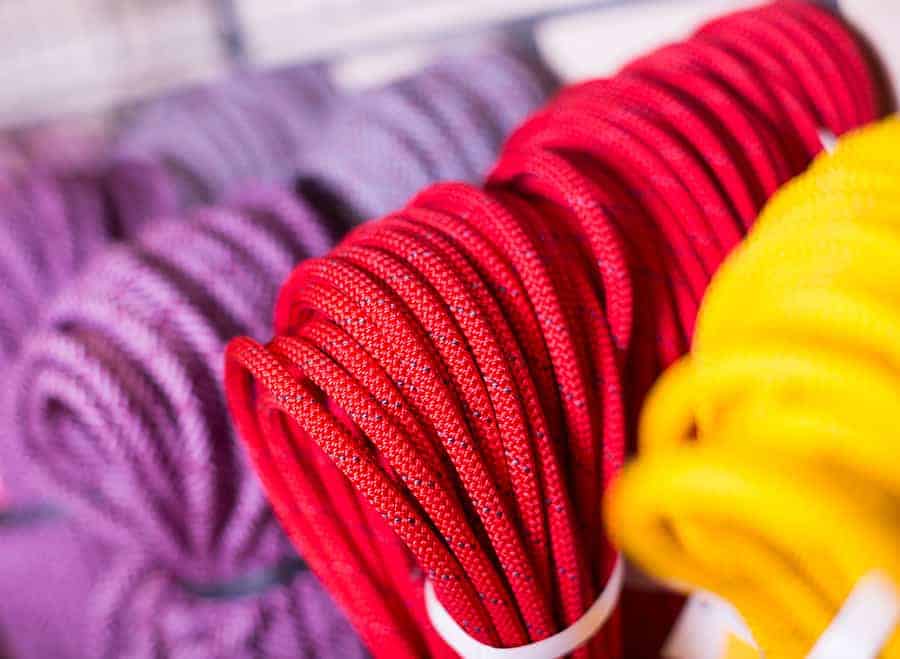
Color
Funny enough, I am more than willing to pay extra for a rope that is a little cuter than just the base price option. However, for this recommendation, I’m not including color as a part of the decision for the best rope for top-rope climbing since the color is a personal preference and you may not like the colors that I like.
Mammut Crag Classic Rope: Black
As I mentioned above, the rope color is not a deciding factor here but I’ve heard that black rope is great for pictures as it doesn’t distract from the rock face.
Price
The price of a rope can vary greatly based on the type (dynamic vs static vs semi-static), the length and the width of the rope.
Most ropes range from $90-$370, with the average cost being $210 on BackCountry and $207 at REI.
I looked at all of the rope for sale on Backcountry and found the average price for rope based on the factors mentioned above. Note that the rope of 70 Meter rope is usually in the 9-9.99mm range so considering just individual description averages isn’t a definitive guide.
Dry Vs Non-Dry:
- Dry Rope Average Price: $224
- Non-Dry Rope Average Price:$180
Width:
- 7mm Rope Average Price: $204
- 11mm Rope Average Price: $140
Length:
- 30 Meter Rope Average Price: $100
- 60 Meter Rope Average Price: $208
- 80 Meter Rope Average Price: $267
Mammut Crag Classic Rope: $160
At the time of writing this, the Mammut Crag Classic Rope 60 Meters is on sale at BackCountry.com for $120, an amazing price for this rope.
Top Alternatives:
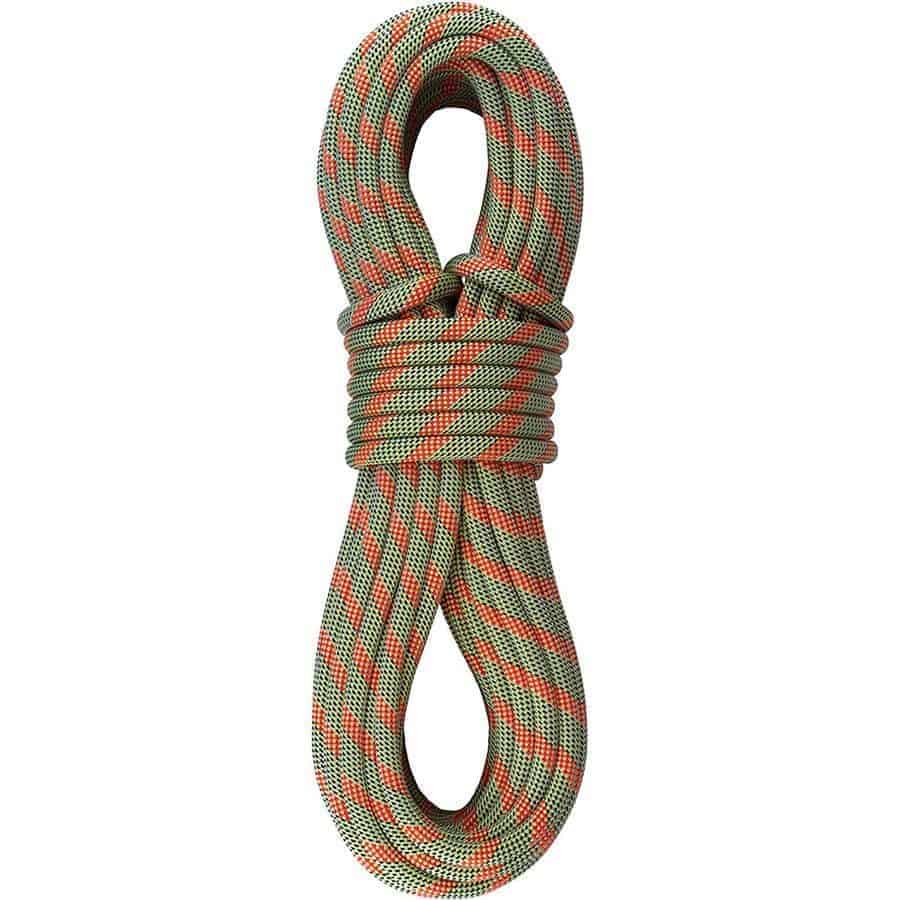
Sterling Rope Evolution VR9
- Style: Dynamic
- Length: 60m
- Diameter: 9.8mm
- Dry Treatment: Dry
See Price from REI here.
This rope is ideal for anyone from entry-level climbers to occasional climbers or weekend warriors. The middle marker shows the middle of the rope for additional security when rappelling and lowering.
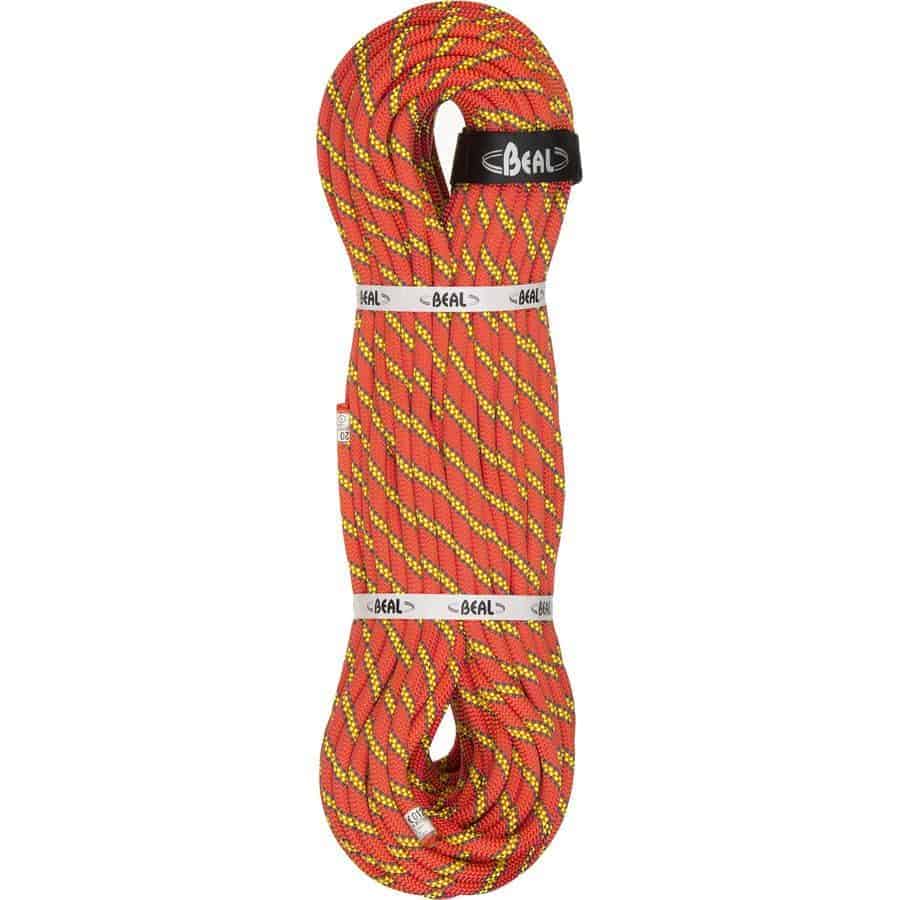
Beal Karma
- Style: Dynamic
- Length: 60m
- Diameter: 9.8mm
- Dry Treatment: Non-Dry
See price from REI here.
The Karma is part of Beal’s Active Line with ropes designed to cover the largest range of climbing disciplines possible without the use of chemical treatments or dye. Black Limit middle mark clearly shows the middle of the rope for additional security when rappelling and lowering
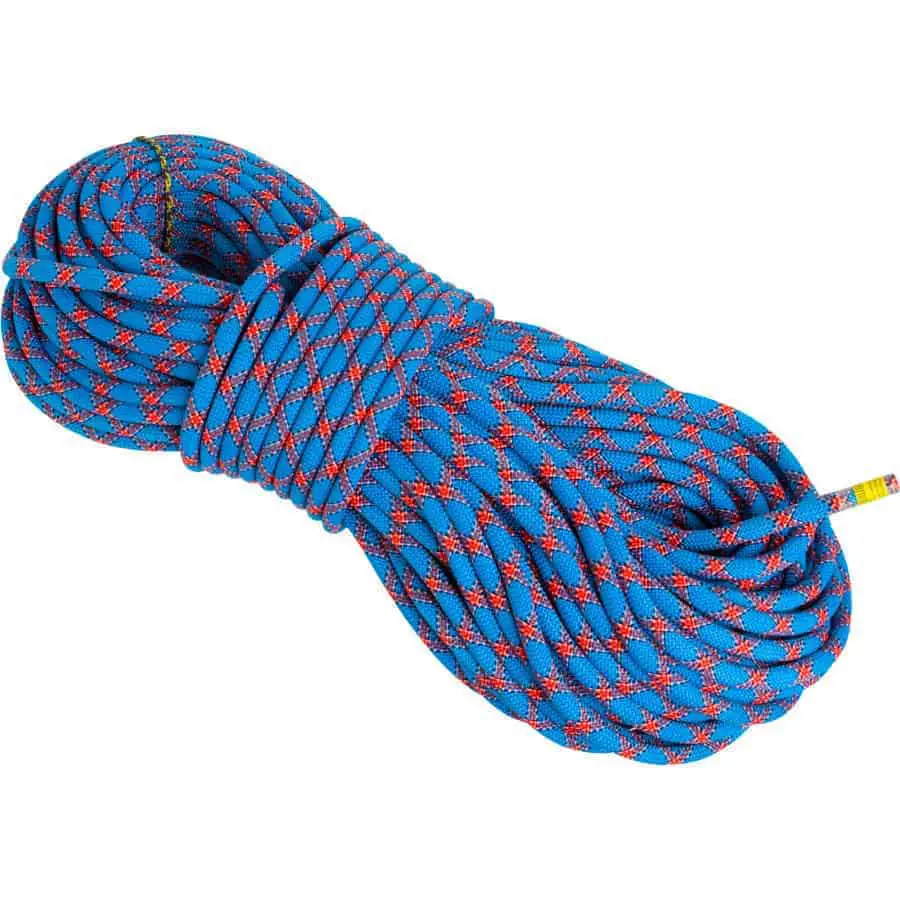
Sterling Evolution Velocity
- Style: Dynamic
- Length: 60m
- Diameter: 9.8mm
- Dry Treatment: Dry
See price from REI here.
The Sterling Evolution Velocity has just the right amount of stiffness so your rope doesn’t flop during critical clips; its silky-smooth sheath withstands abrasion and slides effortlessly to reduce rope drag. This is the rope of choice for Chris Sharma and is what he uses for working the toughest routes

